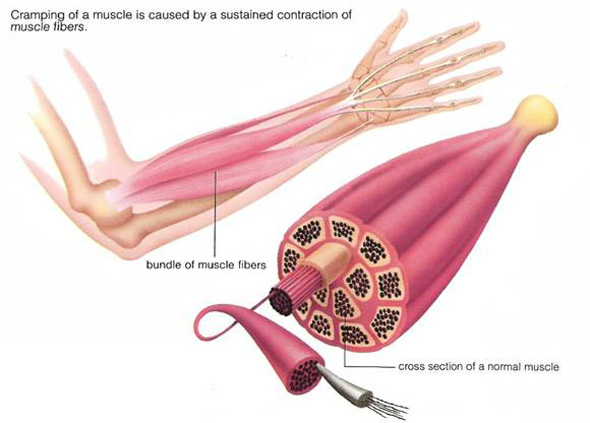
Muscle spasm is the most common response of the body to stress.
Muscle spasm can occur as a response to emotional, psychological or physical stress. Common examples of physical stresses are traumas such as may occur in a fall, car accident, or a blow. Other less well-recognized examples include engaging in repetitive movements or “bad habits,” such as sitting at a desk with slouched shoulders and head forward, sleeping on the side or on the abdomen with the head turned to one side, or holding the phone with the shoulder to the ear.
The Strain Counterstrain technique is a manual therapy whereby the clinician uses only his hands for the treatment of muscle and joint pain.
Once the central nervous system is informed of one of these stressors, it will trigger a defense mechanism called the protective muscle spasm reflex. In this mechanism, the muscle, or a group of muscles, will receive nerve impulses telling it to contract and to remain contracted. This state of prolonged contraction is called spasm.
When the muscle is in spasm and its fibers have shortened, it loses its ability to lengthen to its relaxed state. The contracted muscle fibers will start to compress small local blood vessels, compromising circulation to the muscle, resulting in lack of oxygen and nutrients to the involved muscle tissue.
Prolonged muscle spasm can produce other detrimental effects, including nerve entrapment and joint compression. In the latter, movement of the joint is performed under increased pressure; over a prolonged period of time, this can lead to deterioration of the joint, as the cartilage, which protects and lubricates the joint surfaces is worn away. In most cases of muscle spasm, the pain that is experienced is localized to the spastic muscle, but the pain may also include referred pain, because the muscle spasm can refer symptoms of pain and/or tingling to other areas of the body far from its source of origin.
This “protective muscle spasm reflex” is indefatigable. Once the muscle is in spasm, it will bombard the nervous system with nerve impulses, informing the nervous system of the muscle spasm. The nervous system will become overexcited and, as a result, motor neurons will carry a message back to the spastic muscle, causing it to remain in the contracted state. Now the muscle and the nervous system are locked in a positive feedback loop. This hyperactivity of the muscle spasm reflex can persist for long periods of time, sometimes as long as years. This is an important mechanism by which acute pain becomes chronic, persistent pain.
Effective treatment of muscle spasm requires involvement of the nervous system, in order to interrupt the nerve stimulation to the muscle. Muscle spasm will not respond positively to massage, stretching, exercise, heat, cold or joint adjustment, because these modalities do not affect the hyperactivity of the muscle spasm reflex. Muscles are not independent structures. The spasm occurs in response to signals from the central nervous system; if the muscle is in spasm, it has a purpose.
One of the most effective techniques for releasing muscle spasm is called Strain Counter Strain technique, also known as Positional Release, which was developed by an osteopathic doctor named Lawrence Jones, O.D.
Strain Counter Strain technique is a manual therapy whereby the clinician uses only his hands for the treatment of muscle and joint pain. He uses passive body positioning of hypertonic (spastic) muscles and dysfunctional joints, relocating the muscles or joints toward positions of comfort, or manually compressing (that is, shortening) the offending muscle. The purpose of this passive shortening of the spastic muscle is to reduce the aberrant neural stimulation to the muscle (the neural portion of the reflex arc) that produces the muscle spasm, accomplishing an immediate reduction of muscle tone to normal levels. This allows the joints influenced by the now relaxed muscle to function optimally, increasing their range of motion and easing muscle and joint pain.
Strain Counter Strain is an effective but extremely gentle technique, because the therapist gently and passively moves the affected area of the body into a position of relative comfort, interrupting the neural reflex that was perpetuating the spasm, producing immediate muscle relaxation and improved mobility.